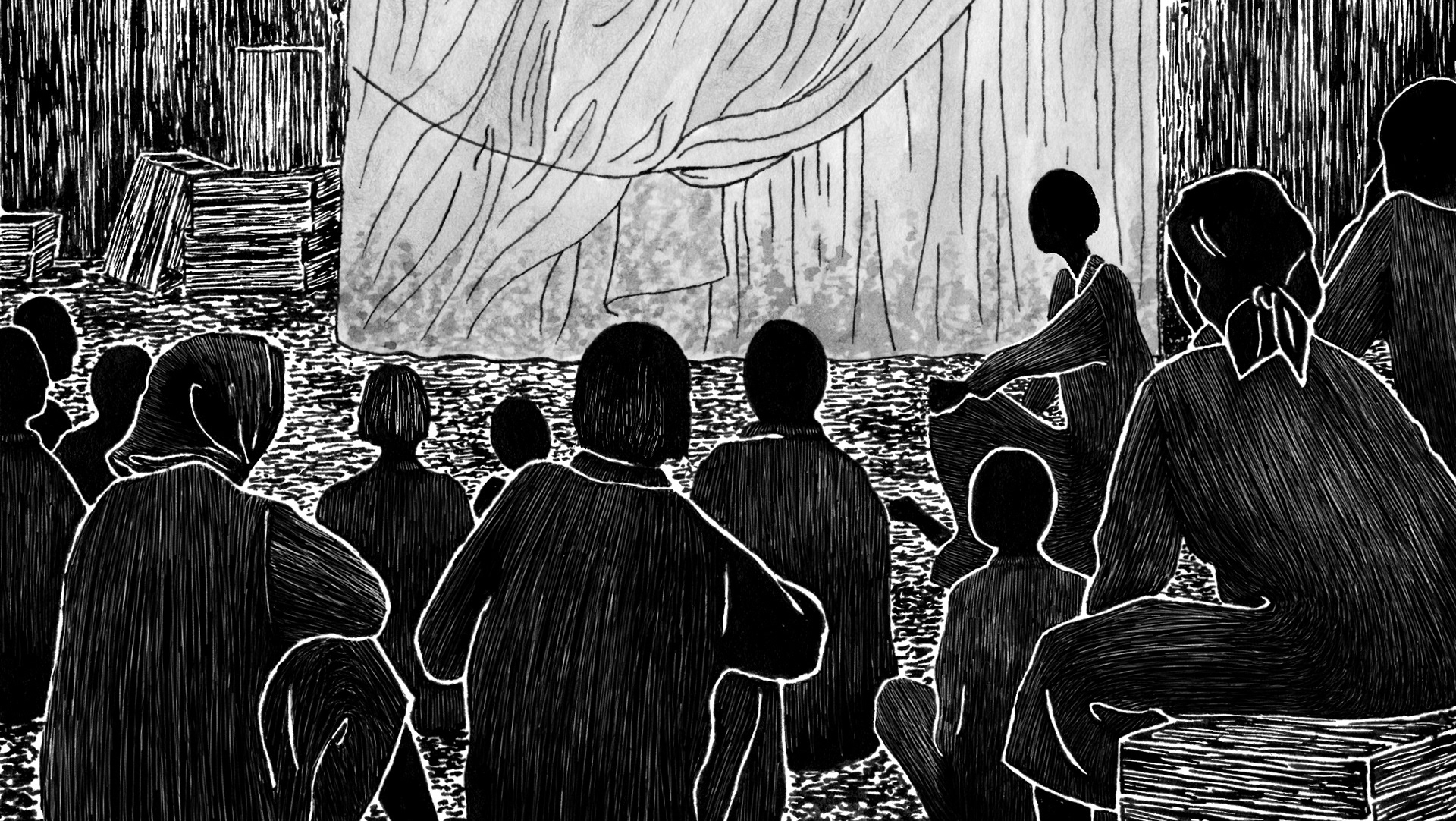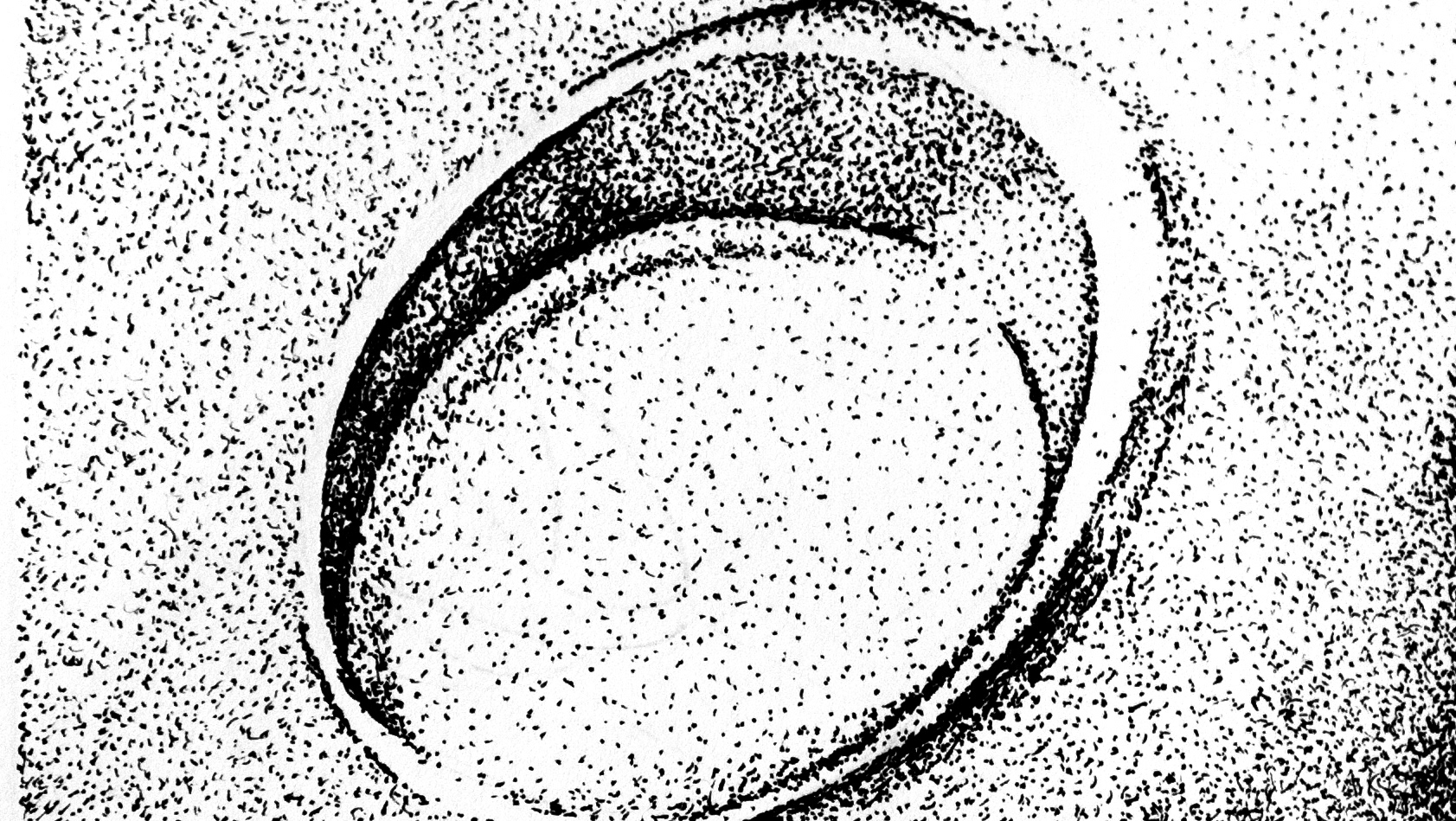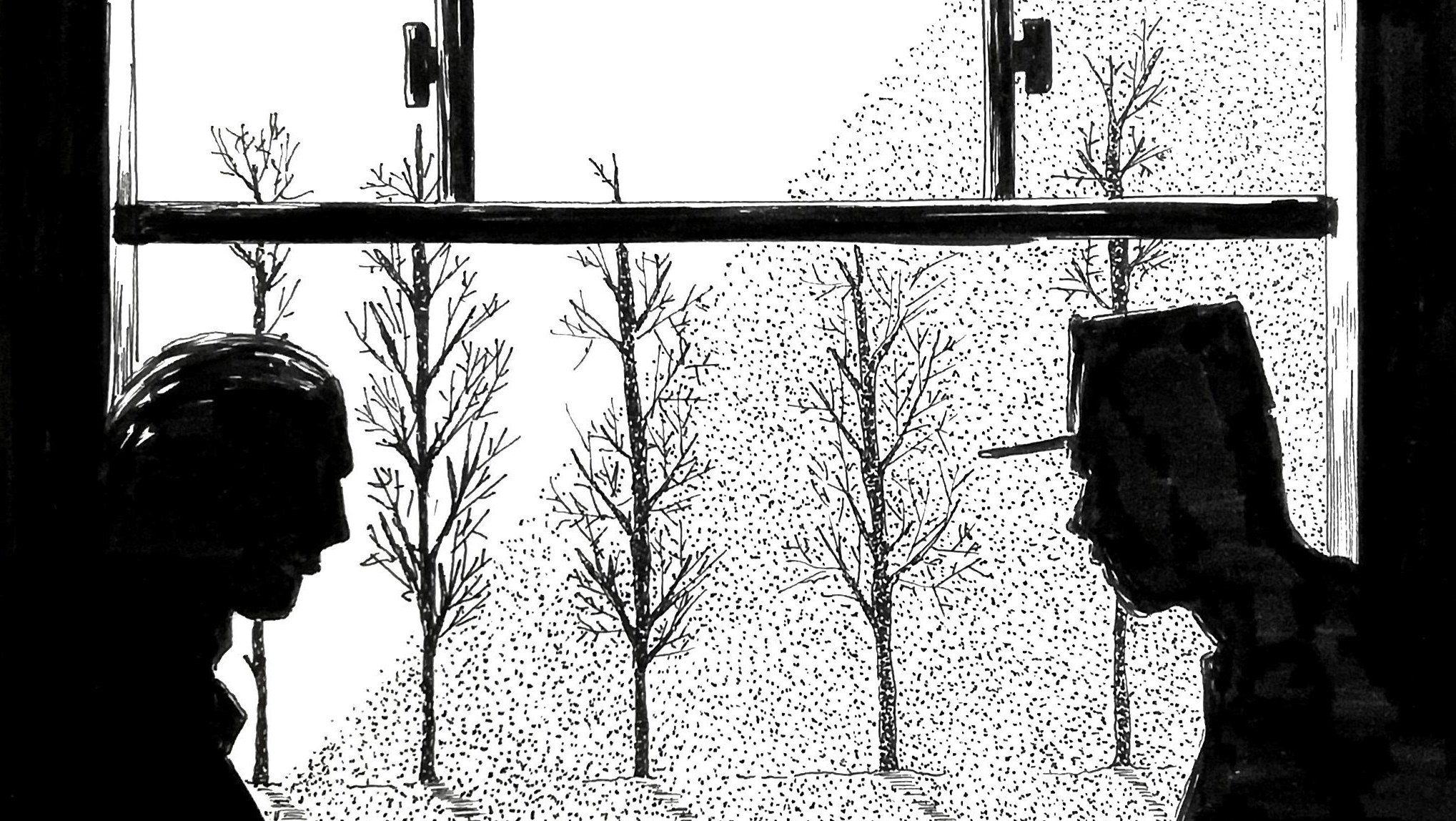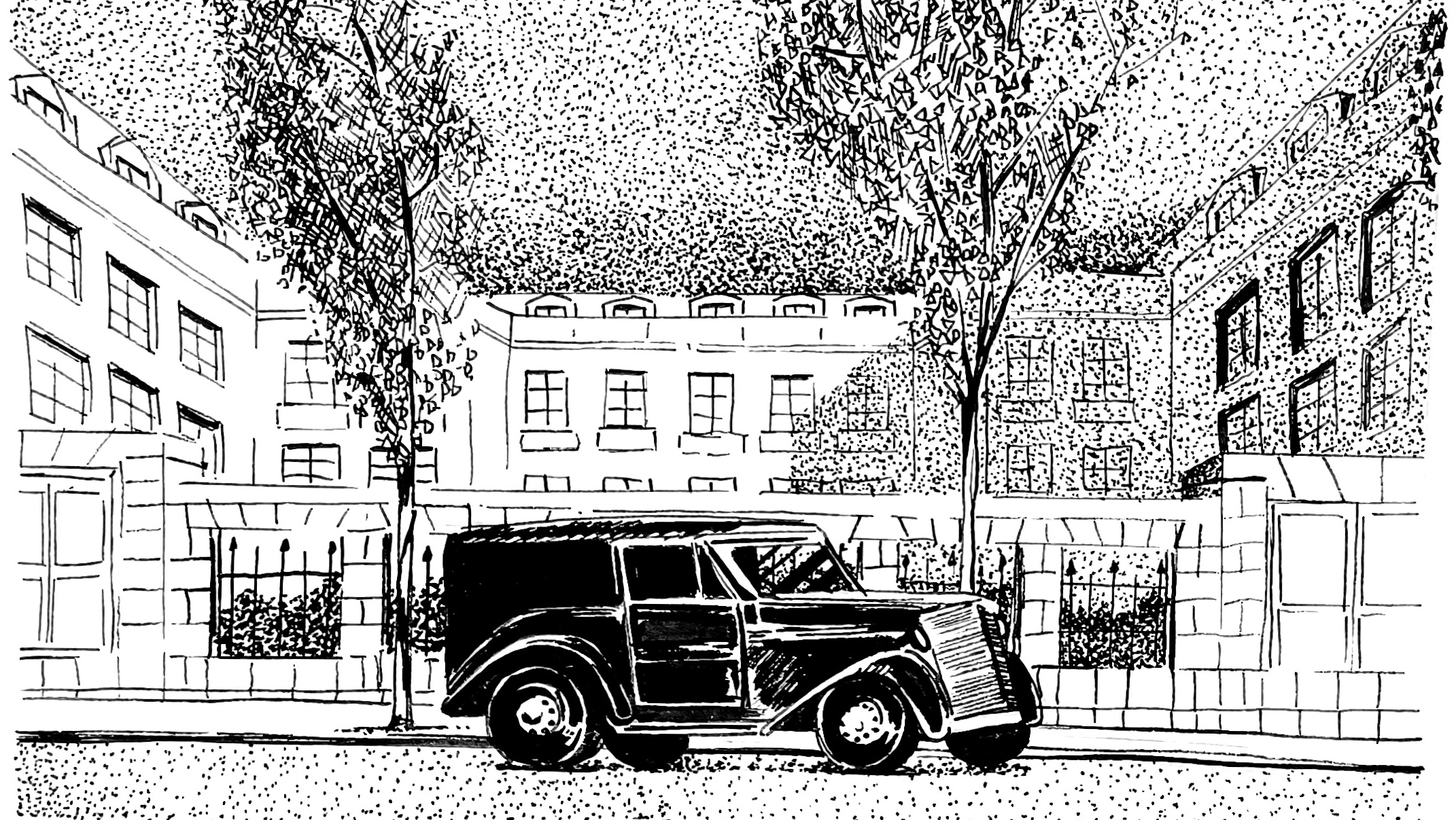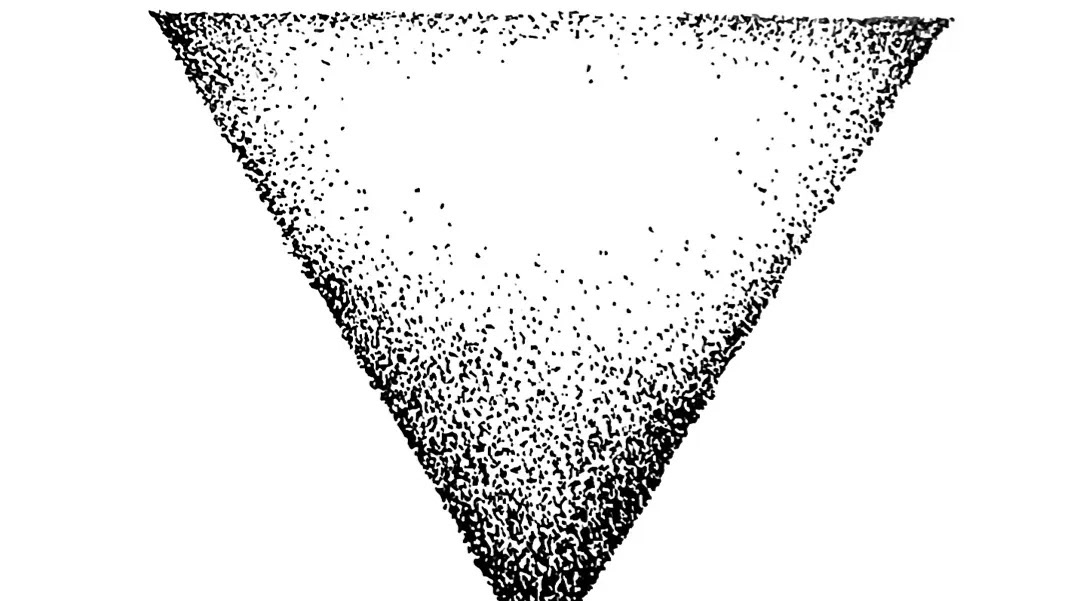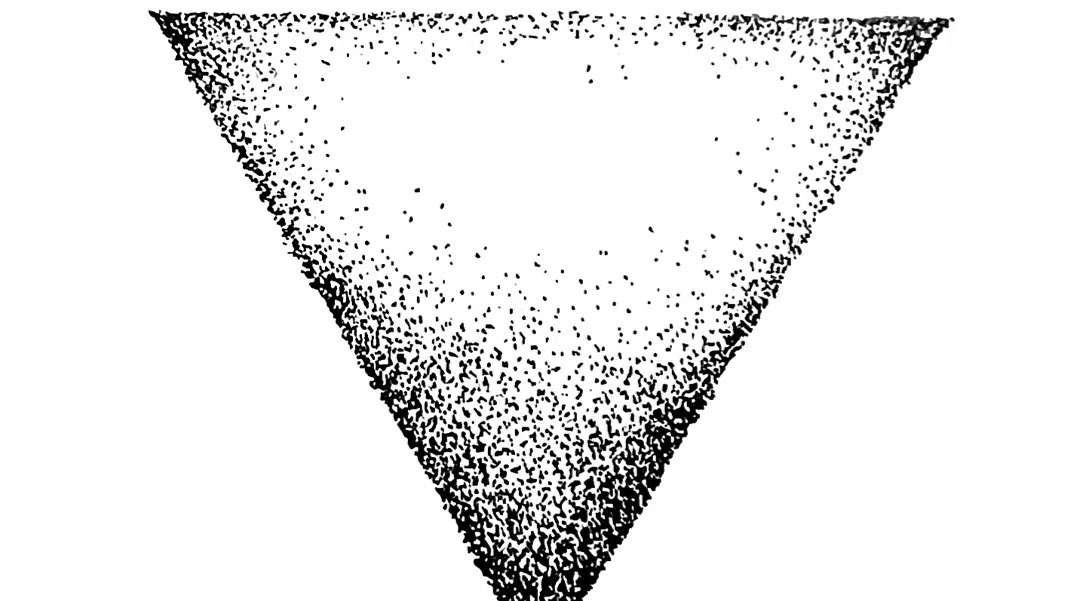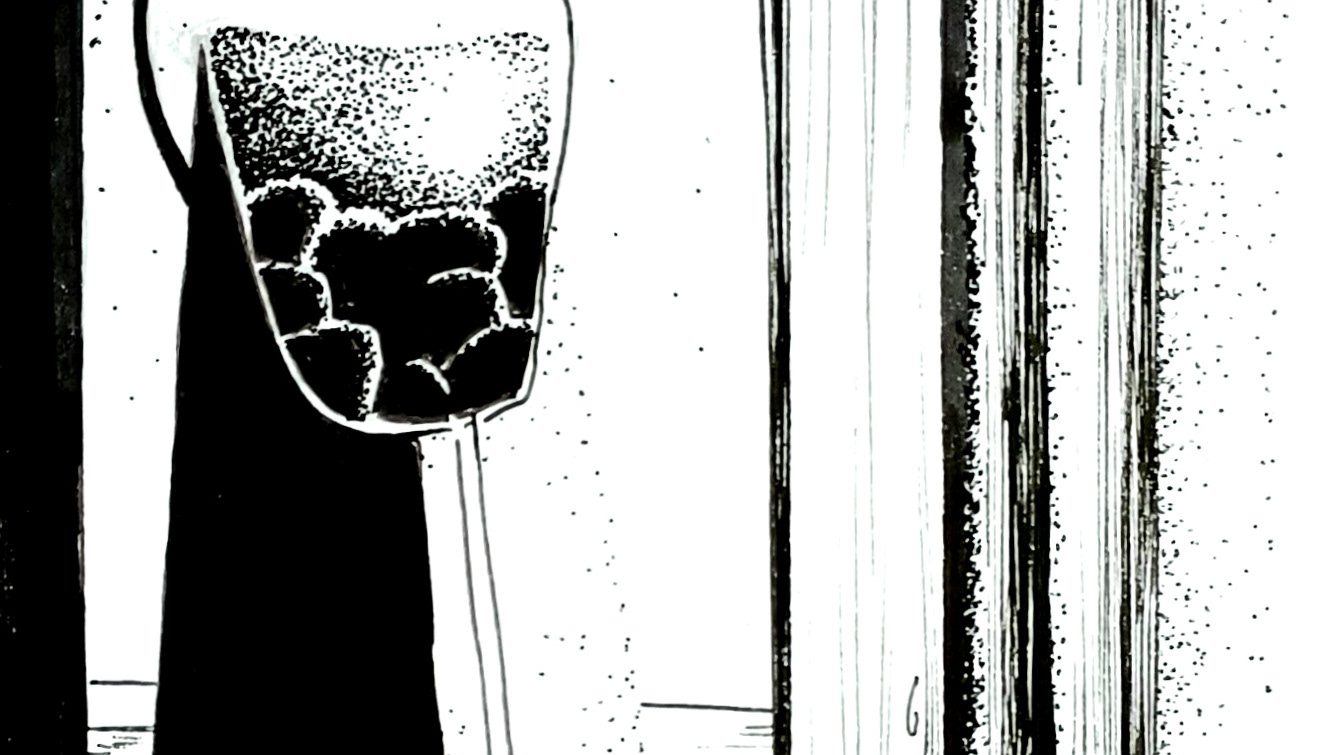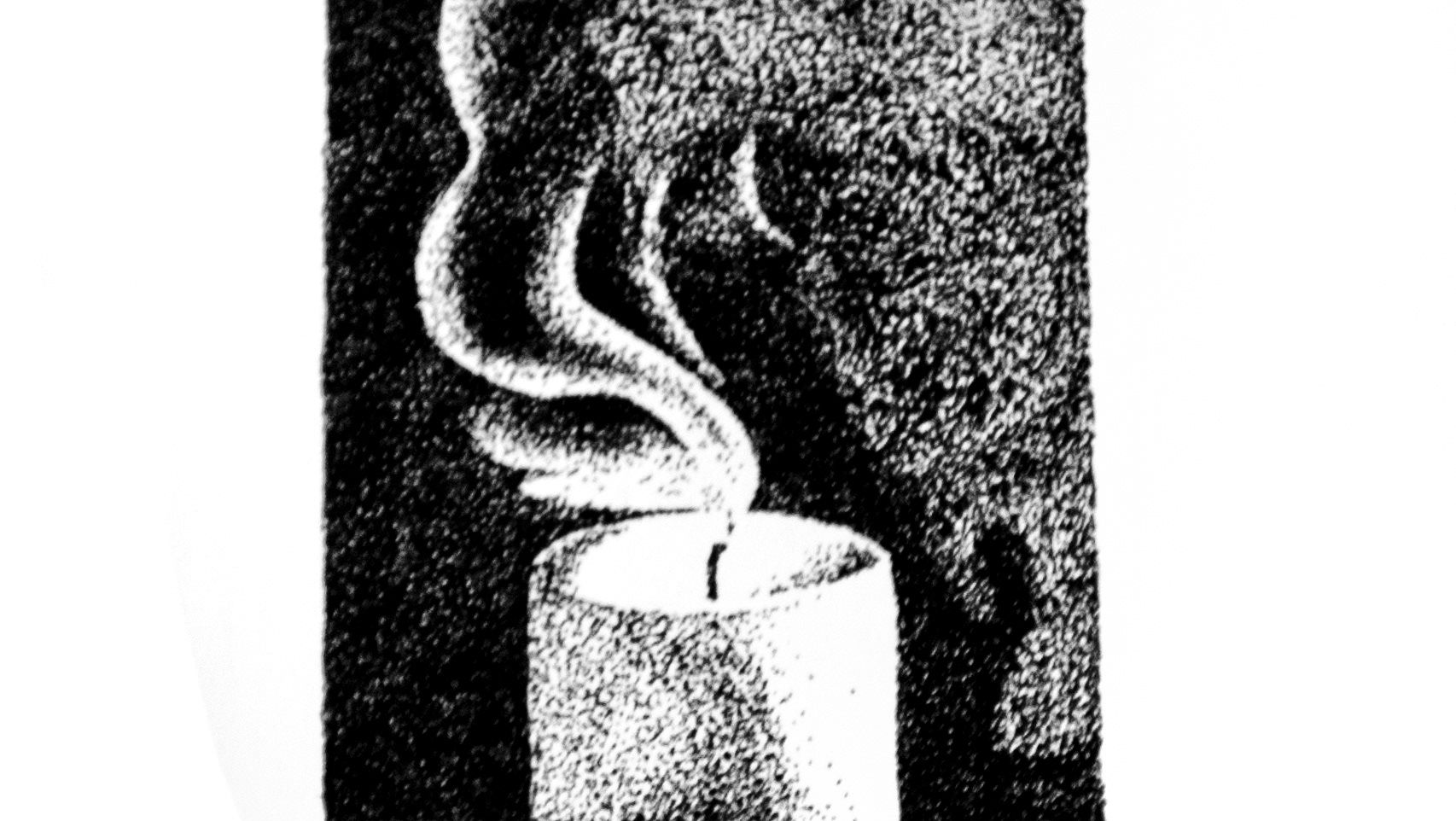
the man on the horse
Today is the 10th of February 1943, it is minus 18 degrees. The 31000 wake up early, under the shouts of the SS, the roll call starts and lasts from 4am to 8am. 4 hours of staying still in the cold is tough.
At 8am, all the women are ordered out… out of the Birkenau camp. This is different, this has never happened before.
10000 women walk and leave the camp. They don't go far, right in front of the entrance, on a little hill. 10000 women stand there, ranged in squares of a hundred women, and they wait.
They wait in the cold.
They are not allowed to break the order of the squares. Any movement breaking the squares could result in violence. Some consider the idea of running away, yet there are soldiers carrying machine guns all around, running away would be suicidal.
They are not allowed to speak. They wait.
The 31000 all wonder what this massive gathering could mean. Are the women leaving this camp? That would be absurd, the 31000 have only been here for 2 weeks. Are they gathered to all be sent to another camp? Are they gathered to be sent to die in the forest? There are rumours of groups being sent there to be murdered, but you wouldn't bring 10000 women at the same time. Yet they also know you don't get many explanations around here, most times there aren't any.
There is this man on a horse, walking around, looking at them, without a word. Who is he? The other guards are looking at him, he seems to be the one taking decisions yet he doesn't say a thing. The more time passes, the less the women can stand. The weaker ones start losing their balance, the squares lose their shapes. Guards use violence, yet the more violence is used, the less the women stand still. Every hour passing means hundreds of women simply falling on the ground.
Henriette Pizzoli holds, but she is really scared for her aunt, Gabrielle Ethis. She is 49 years old, and the next hours of standing during this terrifying roll call might be too much for her.
Back in 1941, France lost the war and was getting used to being occupied by the german army. Life carried on eventually.
Henriette Pizzoli wanted to end her extramarital relation with Alphonse Baconier. He was married, he was violent, Henriette deeply regretted her affair with him. Alphonse didn't want to end anything, he threatened Henriette to kill her. Henriette contacted the police, a detective worked on the case.
The detective studied Alphonse's case. Alphonse indeed threatened to kill Henriette, it wasn't so hard to figure that out. The detective could have stop here but he decided to dig deeper.
Alphonse couldn't get over his break up with Henriette. He didn't kill Henriette, but when he heard that her husband, prisoner of war in Germany, escaped and went to hiding in Gabrielle's house, Alphonse didn't hesitate a second and denounced him. Alphonse truly was a terrible human being. Thankfully, though, this time, no one was arrested, the police never found Henriette's husband.
On the 22nd of June 1942, 19 prisoners escaped from the Royallieu camp in Compiegne. A tunnel was dug, thanks to heroes like Antoine Corgiatti, Giobbe Pasini and Louis Eudier. 2 of the people who escaped, Louis thorez and Henri Le Gall, decided to ask Alphone for help, they needed somewhere to hide. Thorez thought he could trust Alphonse, his wife was Thorez's adopted sister, but all Alphonse could think was that he finally had his revenge. He told the 2 prisoners to hide at Henriette's, who accepted and offered her house while she stayed at her aunt's.
Alphonse denounced Henriette, again. The detective studied the case again, he arrested the prisoners, Henriette, her aunt and uncle, as well as Alphonse. All the men were shot on the 11th of August, including Alphonse, who was still glad he at least got his revenge. Henriette and Gabrielle were later deported to Birkenau, and as for the detective, he felt uneasy about it all. Thinking that it all started with a young woman contacting the police because her ex-lover threatened to kill her made him feel uncomfortable, he somehow felt a little played by Alphonse at the end.
Back to the present, Gabrielle stands still, so does Henriette. Many women have fallen on the ground, but the 31000 are all standing, the quarantine has left them with more energy than the other women in Birkenau. The sun is falling, and after an entire day of standing in the cold, all the women are finally told to come back to Birkenau, the roll call is finally over. The 31000 start walking again, leaving behind them a thousand women, fallen on the snow, like on a battlefield.
As they walk back through an odd corridor made of guards, Josee warns the women to run as fast as they can. The 31000 don't quite understand yet Josee is to be believed, always, so they run as fast as they can. After spending so long in the freezing cold, running is incredibly difficult, the older women just can't. The youngest carry the oldest, the daughters their mothers. Alice Vitterbo, with her wooden leg, receives help from Helene Salomon, Simone Sampaix, her toes frozen, is held by 2 women on each side.
The women run through the corridor, the guard hit them, they grab the weakest and throw them on the side, leaving the others join their barracks. Henriette holds her aunt, terrified of being separated to her. They both run as fast as they can, none of them gets picked up, fortunately. But 14 women amongst the 31000 are missing, including Helene Brabander and Alice Vitterbo, grabbed and sent away in a different block, block 25. There is no food there, only waiting and starving to death.
A tragedy.
Why did they have to go through such a day? It is frustrating to ask questions in Birkenau, you get so few answers. But this time, the guards and the SS wanted the women to know the answer to that question. Germany just lost control of Stalingrad, the Soviet Unionns just got their first victory, more than 100000 german soldiers just became prisoners. So the man on the horse, that general or commandant, whose name was Hoess, he was so upset about Stalingrad that he needed a revenge.
A revenge for Stalingrad, this is what happened.
Notes
Thank you for listening to this episode of 31000/45000, the story of 2 trains of french members of the resistance. My name is Matthieu Landour Engel and among the 31000 and the 45000, I have decided to focus on around a hundred of them. This was a very subjective decision, based on the information I could find and also narrative possibilities.
This episode was about Henriette Pizzoli and the 10th of february 1943 run.
The run was a traumatizing event for the 31000 and the women prisoners of Birkenau. It was a cruel event which made no sense whatsoever. The sources from this event mostly come from Charlotte Delbo’s book, she was able to know the temperature that day as there was a thermometer at the entrance of the camp. She identified the commandant Hoess, who was the commandant of Auschwitz concentration and extermination.
Hoess was the longest commandant of the camp, from the beginning to the end, with a brief pause between november 1943 and May 1944. He ran the place and is responsible of the carrying of the extermination of the european jewish population. He was arrested on the 11th of March 1946, was a witness during the Nuremberg trials, wrote a book about his life as he was captive, and was later tried and hanged on the 16th of April 1947.
His book, Commandant of Auschwitz: The autobiography of Rudolf Hoess, is a tough one to advise. I read it when I was younger and thought that the man mostly tried to avoid the blame on his crimes. For this project, I decided not to read it again and to focus more on the victim testimonies rather than the perpetrators’ excuses.
The story of Henriette Pizzoli and Gabrielle Ethis is another example of how the 45000 and the 31000 were linked, as some 45000 participated in the construction of a tunnel in Compiegne, where 19 prisoners escaped, some of whom were hidden thanks to Gabrielle and Henriette.
The Stalingrad battle is one of the most well known battle between the german and the Soviet Unionns, one of the largest in WW2, between 23rd of august 1942 and the 2nd of february 1943. More than 2 million people participated to that battle, probably a million died. At the end, the german army was surrounded inside the city, without food or ammunition, it surrendered, and 90000 soldiers were captured.
The battle was one of the biggest german defeat and considered as a turning point in the eastern war, as Germany started a defensive position, where it had been on the offence so far. For many, it meant the Soviet Unionn could hold, that the german were not invincible, that the allies could win the war.
The parallel between the 2 stories may be too much on the nose but it is also an obvious reminder that masculine revenge is too often directed on women. The revenge for the defeat of Stalingrad led to the women’s race of the 10th of February. Alphonse’s revenge led to the deportation of Gabrielle and Henriette. it is also, as was the previous episode, an example that denouncing also often lead to your own execution, as Alphonse was still executed.
I assumed the policeman working on the case of Gabrielle Ethis and Henriette Pizzoli may have felt tricked by Alphonse Baconier, but I have no way of proving it.
I have been trying to find Henriette Pizzoli’s relatives, unfortunately, my research was unsuccessful. If by any chance, you know of someone related to her please let me know, I would be very pleased to get in touch and make sure the text I wrote doesn’t contain any errors.
My sources for this story are the book le convoi du 24 janvier by Charlotte Delbo, A train in winter by Caroline Moorehead. My sources also are red triangles in Auschwitz, by Claudine Cardon Hamet, the website deportes-politiques-auschwitz.fr, memoire vive and the foundation for the memory of deportation website and the fantastic website auschwitz.org .
Thank you very much for listening, the next episode will be about Josee Maria Alonso and the water issue in Birkenau.
FRANCAIS
Aujourd’hui, le 10 février 1943, la température descend à -18 degrés. Les 31000 se réveillent tôt, aux cris des SS, l’appel dure de 4 à 8 heures du matin. 4 heures durant, les femmes restent debout dans le froid, la douleur.
A 8 heures, les femmes sont sommées de sortir… de sortir du camp de Birkenau. Toutes les femmes du camp, absolument toutes. Ca n'était jamais arrivé avant, quelque chose se prépare.
10000 femmes marchent et sortent du camp. Elles ne vont pas si loin, seulement en face du camp, sur une petite colline. 10000 femmes se tiennent la, en carrés d’une centaine, et elles attendent.
Elles attendent dans le froid.
Elles ne sont pas autorisées à briser l’ordre des carrés, chaque écart peut entraîner des coups. Certaines femmes regardent autour d’elles, elles considèrent l’option de prendre la fuite, après tout elles sont à l'extérieur du camp. Mais les femmes sont entourées par des gardes armés de mitrailleuses, prendre la fuite est suicidaire.
Elles ne sont pas autorisées à parler, seulement à attendre.
Les 31000 se demandent toutes ce que cette opération signifie. Les femmes vont-elles toutes quitter le camp? Ou vont-elles être emmenées dans la forêt pour s’y faire assassiner? Des rumeurs courent de tueries dans les forêts depuis quelques jours, mais pas 10000 personnes à la fois, ça n’aurait aucun sens. De toutes façons, les questions manquent de réponses par ici.
Il y a un homme sur un cheval, un SS, il trotte ici et là, il regarde les femmes, sans mot dire. Qui est-il? Les gardes le regardent, ils semblent répondre de lui, mais il ne dit rien.
Le temps passe, le froid continue, les femmes ont de plus en plus de difficultés à rester debout, les genoux fléchissent. Les plus faibles perdent leur équilibre, les carrés commencent à perdre leur forme. Les gardes viennent vers les plus faibles, ils les frappent, elles tiennent de moins en moins debout. Chaque heure qui passe laisse des centaines de femmes par terre.
Henriette Pizzoli tient, mais elle craint pour sa tante, Gabrielle Ethis. Elle a 49 ans, et Henriette s'inquiète que les prochaines heures de l’appel ne soient trop pour elle.
Plus tôt, en 1941, la France avait perdu la guerre et s’habituait à une occupation allemande. La vie reprenait son cours.
Henriette Pizzoli voulait rompre avec Alphonse Baconnier, avec qui elle entretenait une relation extra-conjugale. Ils étaient tous deux mariés, Alphonse était aussi violent, Henriette regrettait son histoire avec lui. Alphonse ne voulait rien arrêter, et il avait même menacé Henriette de la tuer, Henriette avait appelé la police, un homme se penchait sur leur cas.
Le policier étudiait l’affaire, il ne faisait peu de doutes qu’Alphonse avait menacé Henriette de meurtre. Le policier aurait pu s’en contenter mais il décidait de chercher à en savoir plus.
De son côté, Alphonse ne se remettait pas de la rupture. Il n’avait pas fait suite à ses menaces, mais alors qu’il entendait que le mari d’Henriette, prisonnier de guerre en Allemagne, s'était échappé et se cachait, Alphonse tenait sa vengeance. Il n'hésitait pas à le dénoncer lâchement, heureusement, la police ne trouvait pas le mari d’Henriette, il avait déjà disparu.
Le 22 juin 1942, 19 prisonniers s'échappaient du camp de Royallieu. Un tunnel avait été creusé grâce à l’action d’hommes comme Antoine Corgiatti, Giobbe Pasini ou Louis Eudier. Parmi les 19 fuyards, 2 d’entre eux, Louis Thorez et Henri Le gall contactaient Alphonse et lui demandaient de l’aide pour se cacher. Thorez pensait pouvoir faire confiance à Alphonse, sa femme était sa soeur adoptive. Il avait tort, Alphonse pensait toujours à se venger, il disait alors aux deux hommes de se cacher chez Henriette. Cette dernière acceptait, elle pensait même qu’Alphonse était enfin passé à autre chose, elle invitait les deux hommes dans son logis et décidait de rester chez sa tante.
Alphonse dénonçait Henriette, encore. Le policier reprenait l’affaire et cette fois-ci trouvait les prisonniers et interpellait tout le monde. Tous les hommes étaient fusillés le 11 Août, y compris Alphonse, surpris mais aussi heureux d’avoir eu sa revanche. Henriette et sa tante Gabrielle étaient déportées à Birkenau, et le policier se sentait mal a l’aise. Tout avait commencé par une femme inquiète des menaces de mort de son amant, et elle finissait par se faire arrêter, le policier se sentait un peu manipulé par Alphonse, un homme en colère qui ne cherchait qu'à se venger.
De retour au présent, Gabrielle Ethis se tient toujours debout, Henriette est rassurée. Beaucoup de femmes sont tombées, mais toutes les 31000 tiennent encore debout, la quarantaine loin du travail des kommandos leur donne plus d'énergie que la moyenne. Le soleil tombe, une journée entière s’est écoulée, les femmes sont restées debout tout ce temps, enfin l’appel s'arrête, elles sont sommées de retourner dans le camp. Les 31000 marchent de nouveau après des heures d'immobilité, mais elles laissent des centaines, peut-être un millier de femmes allongées, éteintes sur la terre froide, mortes de Birkenau. Elles laissent un champ de bataille.
Elles marchent lentement vers l'entrée du camp, en direction d’un corridor de gardes de plus en plus fin, comme un goulot qui se resserre encore et encore. Josée, agitée, crie à toutes les 31000 de courir aussi vite qu’elles le peuvent. Les 31000 ne comprennent pas pourquoi, mais toutes savent qu’il faut écouter Josée. Alors elles courent, aussi vite que possible, mais c’est si difficile après des heures à rester immobiles dans le froid. Les plus jeunes y parviennent, les plus âgées sont en grande difficulté, alors elles se font aider par les jeunes, les mères par leurs filles. Alice Vitterbo, avec sa jambe de bois, reçoit de l’aide d'Hélène Salomon. Simone Sampaix est jeune, mais ses doigts de pied sont gelés, 2 autres 31000 l’aident à garder son équilibre.
Les femmes traversent le corridor, les gardes commencent à frapper dans le tas. Ils attrapent celles qu’ils estiment trop faibles et les font sortir du corridor, tout en laissant les autres rejoindre leurs baraques, leurs blocks. Henriette s’agrippe à sa tante et traverse le corridor maudit, effrayée à l'idée d'être séparée de Gabrielle. Elles courent aussi vite que possible, résistent aux coups de bâton, elles passent, ni l’une ni l’autre n’a été attrapée.
De retour dans leur block de quarantaine, 14 femmes parmi les 31000 manquent. Alice Vitterbo a été arrêtée et envoyée avec les autres dans un nouveau block, le block 25. Il n’y a pas de nourriture là-bas, ni d’eau. C’est un block d’attente, ou l’on meurt de faim.
Une tragédie, un massacre. La course du 10 février est un jour affreux.
Pourquoi faire subir ça aux femmes de Birkenau? Poser des questions est si frustrant, car on ne reçoit que peu de réponses. mais cette fois-ci, les gardes et les SS veulent que les femmes sachent, ils veulent donner une réponse. L’ Allemagne vient de perdre le contrôle de la ville de Stalingrad, les russes viennent de remporter leur première grande victoire, autour de 100000 soldats ont été faits prisonniers.
L’homme sur son cheval, le général, était si furieux de cette défaite, il voulait se venger, il s’est vengé sur les femmes.
Une revanche pour Stalingrad, voilà ce que c’est.
notes
Thank you for listening to this episode of 31000/45000, the story of 2 trains of french members of the resistance. My name is Matthieu Landour Engel and among the 31000 and the 45000, I have decided to focus on around a hundred of them. This was a very subjective decision, based on the information I could find and also narrative possibilities.
This episode was about Henriette Pizzoli and the 10th of february 1943 run.
The run was a traumatizing event for the 31000 and the women prisoners of Birkenau. It was a cruel event which made no sense whatsoever. The sources from this event mostly come from Charlotte Delbo’s book, she was able to know the temperature that day as there was a thermometer at the entrance of the camp. She identified the commandant Hoess, who was the commandant of Auschwitz concentration and extermination.
Hoess was the longest commandant of the camp, from the beginning to the end, with a brief pause between november 1943 and May 1944. He ran the place and is responsible of the carrying of the extermination of the european jewish population. He was arrested on the 11th of March 1946, was a witness during the Nuremberg trials, wrote a book about his life as he was captive, and was later tried and hanged on the 16th of April 1947.
His book, Commandant of Auschwitz: The autobiography of Rudolf Hoess, is a tough one to advise. I read it when I was younger and thought that the man mostly tried to avoid the blame on his crimes. For this project, I decided not to read it again and to focus more on the victim testimonies rather than the perpetrators’ excuses.
The story of Henriette Pizzoli and Gabrielle Ethis is another example of how the 45000 and the 31000 were linked, as some 45000 participated in the construction of a tunnel in Compiegne, where 19 prisoners escaped, some of whom were hidden thanks to Gabrielle and Henriette.
The Stalingrad battle is one of the most well known battle between the german and the russians, one of the largest in WW2, between 23rd of august 1942 and the 2nd of february 1943. More than 2 million people participated to that battle, probably a million died. At the end, the german army was surrounded inside the city, without food or ammunition, it surrendered, and 90000 soldiers were captured.
The battle was one of the biggest german defeat and considered as a turning point in the eastern war, as Germany started a defensive position, where it had been on the offence so far. For many, it meant the russian could hold, that the german were not invincible, that the allies could win the war.
The parallel between the 2 stories may be too much on the nose but it is also an obvious reminder that masculine revenge is too often directed on women. The revenge for the defeat of Stalingrad led to the women’s race of the 10th of February. Alphonse’s revenge led to the deportation of Gabrielle and Henriette. it is also, as was the previous episode, an example that denouncing also often lead to your own execution, as Alphonse was still executed.
I assumed the policeman working on the case of Gabrielle Ethis and Henriette Pizzoli may have felt tricked by Alphonse Baconier, but I have no way of proving it.
My sources for this story are the book le convoi du 24 janvier by Charlotte Delbo, A train in winter by Caroline Moorehead. My sources also are red triangles in Auschwitz, by Claudine Cardon Hamet, the website deportes-politiques-auschwitz.fr, memoire vive and the foundation for the memory of deportation website and the fantastic website auschwitz.org .
Thank you very much for listening, the next episode will be about Josee Maria Alonso and the water issue in Birkenau.

